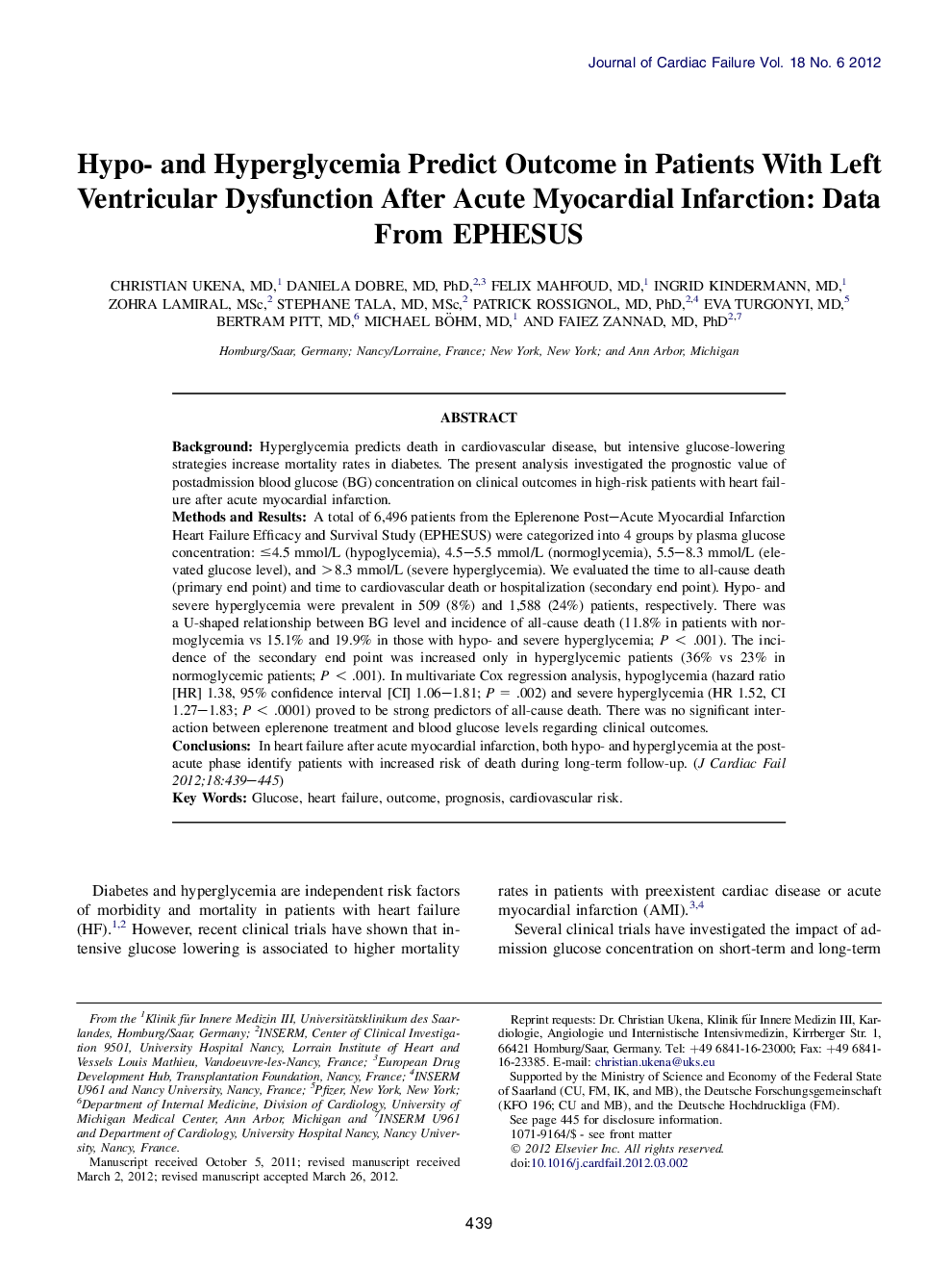| Article ID | Journal | Published Year | Pages | File Type |
|---|---|---|---|---|
| 2960366 | Journal of Cardiac Failure | 2012 | 7 Pages |
BackgroundHyperglycemia predicts death in cardiovascular disease, but intensive glucose-lowering strategies increase mortality rates in diabetes. The present analysis investigated the prognostic value of postadmission blood glucose (BG) concentration on clinical outcomes in high-risk patients with heart failure after acute myocardial infarction.Methods and ResultsA total of 6,496 patients from the Eplerenone Post–Acute Myocardial Infarction Heart Failure Efficacy and Survival Study (EPHESUS) were categorized into 4 groups by plasma glucose concentration: ≤4.5 mmol/L (hypoglycemia), 4.5–5.5 mmol/L (normoglycemia), 5.5–8.3 mmol/L (elevated glucose level), and >8.3 mmol/L (severe hyperglycemia). We evaluated the time to all-cause death (primary end point) and time to cardiovascular death or hospitalization (secondary end point). Hypo- and severe hyperglycemia were prevalent in 509 (8%) and 1,588 (24%) patients, respectively. There was a U-shaped relationship between BG level and incidence of all-cause death (11.8% in patients with normoglycemia vs 15.1% and 19.9% in those with hypo- and severe hyperglycemia; P < .001). The incidence of the secondary end point was increased only in hyperglycemic patients (36% vs 23% in normoglycemic patients; P < .001). In multivariate Cox regression analysis, hypoglycemia (hazard ratio [HR] 1.38, 95% confidence interval [CI] 1.06–1.81; P = .002) and severe hyperglycemia (HR 1.52, CI 1.27–1.83; P < .0001) proved to be strong predictors of all-cause death. There was no significant interaction between eplerenone treatment and blood glucose levels regarding clinical outcomes.ConclusionsIn heart failure after acute myocardial infarction, both hypo- and hyperglycemia at the postacute phase identify patients with increased risk of death during long-term follow-up.
